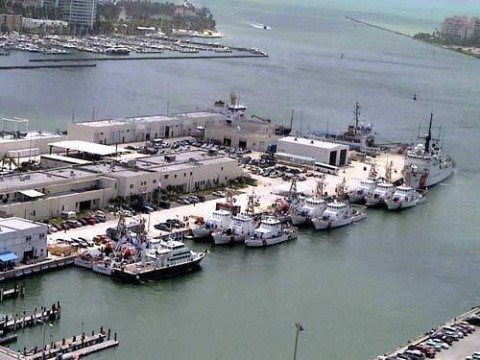Evaluation and Testing of Outdoor Sampling and Analysis Methods
EPA conducts research to develop methods and technologies to rapidly and cost-effectively remediate areas affected by a bioterrorism attack. Methods for detection of biological agent following an incident include swab and wipe sampling, vacuum sampling, and grab sampling. Agent detection is done using bioagent-specific analytical method(s). These

detection and detection methods have been evaluated for their application in indoor environments; however, their performance, when utilized in an outdoor environment, is largely unknown. Determining the performance of available sampling and analysis methods for outdoors is a high priority.
The U.S. Coast Guard (USCG) bases and ports are a potential terrorist target. By the nature of their mission and location, bases and ports have unique surfaces and environments (e.g., salt encrusted surfaces) that could affect the performance of sampling and analysis methods. Additionally, standard USCG maintenance activities, such as mopping and spraying surfaces, might provide an opportunity to collect samples in novel ways.
This project task is evaluating sampling and analysis methods targeting Bacillus spores in outdoor setting relevant to a USCG base. Certain outdoor surface materials would be expected to be encountered in a wide-area contamination incident involving a USCG base. Coupons (samples) of these materials are being use in the evaluation. The first phase of this task is to evaluate traditional sampling methods, such as sponge wipe sampling for non-porous surfaces and MicroVac™ sampling for porous surfaces. The second phase will evaluate composite sampling methods utilizing USCG cleaning methods, such as rinsing and mopping. The following is a list of the material/sample methods pairs chosen for this research:
Material Surfaces – Traditional Methods
- Marine grade aluminum – Sponge wipe
- Marine grade aluminum, with sea salt spray –Sponge wipe
- Non-skid tread – MicroVac
- Non-skid tread, with sea salt spray – MicroVac
- Tempered glass, with sea salt spray – Sponge wipe
- Gravel – Grab / Extract
- Bilge water – Aqueous grab sample
Material Surfaces – Composite methods
- Marine grade aluminum, non-skid tread – Rinse water or mop material
- Asphalt roofing shingles – Wash-Off or rain water
- Marine grade aluminum, non-skid tread, with sea salt spray – Rinse water or mop material
Samples are to be inoculated with known concentrations of Bacillus thuringiensis subsp. kurstaki (Btk) spores (as a surrogate for B. anthracis) and analyzed using two existing EPA methods, culture and rapid viability polymerase chain reaction (RV-PCR). Coupons will be inoculated with two relatively low levels of Btk spores (10 colony forming units (CFU)/cm2 and 1,000 CFU/cm2) to challenge the recovery efficiency of the sampling methods and the detection capability of the analytical methods. Samples will be collected over four time points: 1 day, 1 month, 3 months, and 6 months.
